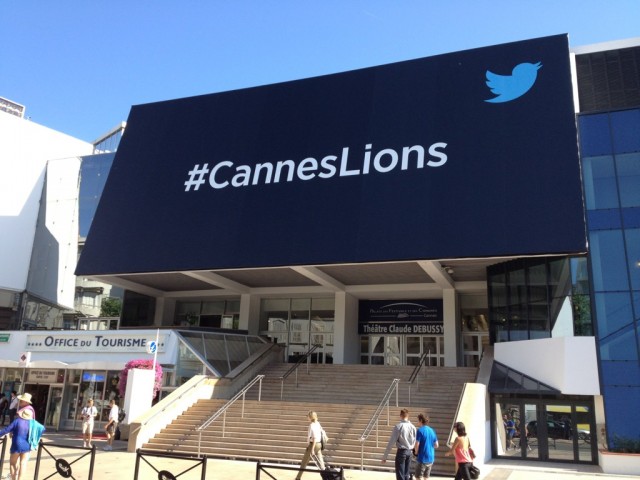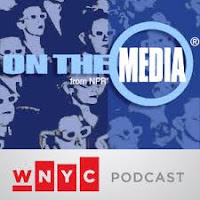
I’ll just come out and say it: Apple should acquire Dropbox.
This doesn’t mean it’s likely to happen – such a deal faces a number of obstacles that we’ll get into in a moment – but for a number of reasons it would make a lot of sense.
I expect that this will be an unpopular opinion both among Apple supporters who believe the company hasn’t lost a step, and among Dropbox fans who fear seeing the cross-platform service being walled-gardened. But the deal would be highly strategic for Apple, and would likely yield an obscene payday for Dropbox shareholders. If handled well, it could be a big win for consumers as well.
Apple has proven itself inept at developing cloud services, and the company’s default iOS mail app has been routinely bested by third parties large and small. Dropbox can help in both instances. At the same time, Apple’s already massive and still growing pile of cash is drawing the ire of investors. Lastly, justified or not, Apple is in the midst of its most negative consumer and Wall Street PR cycle since its meteoric run began with the launch of the iPod in late 2001. In this environment, a bold and exciting announcement like a new product category or a major acquisition would be worth its weight in gold.
As Jim Cramer said on CNBC earlier today, “Apple is becoming the JCPenney of tech. I think that there is a sense that the company is in a tailspin, and it doesn’t seem to matter what they do right now.”
Front and center in the case for this acquisition is Apple’s inability to create cloud services that live up to expectations. It’s been widely documented that iCloud (and iTunes Match) is a complete and total trainwreck for both consumers and developers. The promise of invisible, “it just works,” synchronization has been anything but a reality. The fact that its predecessor, MobileMe, was also a disaster makes this more of a pattern than a one-off occurrence.
As AgileTortoise developer Greg Pierce told The Verge, “iCloud with Core Data is a developer’s worst nightmare. It’s frustrating, maddening, and costs hundreds of support hours.”
Dropbox, on the other hand, has managed to integrate with dozens of apps and has successfully on-boarded more than 100 million users, a significant portion of which are everyday consumers with varying technical proficiencies. Apple would be wise to acquire as much of this market share, consumer good will, and engineering proficiency as possible, cost be damned. And while Dropbox obviously has the product that Apple needs today, just as important is the fact that it has the engineering talent and vision to keep them innovating in this space for years to come.
The Y Combinator alumni company isn’t the only player in the cloud storage space, as Box, Microsoft’s SkyDrive, Google Drive, Amazon Cloud Drive, and SugarSync all are hoping to solve the cloud storage and file syncing challenges of consumers and business. But as far as ubiquity and brand sentiment go, Dropbox owns the market.
Dropbox and Apple currently have very different visions for data synchronization. Dropbox still relies on folder-based organization with selective syncing and sharing among users. Apple, on the other hand, prefers that its users forget the concept of folders and a hard drive to have everything synced seamlessly across every device. It’s hard to conceive of either company abandoning its strategy, but given Dropbox’s proven ability to execute in the cloud services space, it would seem that they’re better positioned from a talent perspective to execute Apple’s vision than Apple itself. Whether the combined company could effectively pursue both strategies in parallel remains open for debate. Given the stakes for Apple, it’s something that would be worth solving.
Bringing Dropbox, its team, and its domain experience into the mix would be the fastest way to deploy the necessary additional resources to the disappointing iCloud product – which some have suggested has only four full time employees supporting it. Many of the developer complaints have centered around the lack of documentation and support offered around both implementation and troubleshooting Core Data instances. This is a problem that Dropbox addressed when it introduced its first API nearly three years ago.
The Cupertino titan is famous for wanting to control its ecosystem from top to bottom, meaning that a simple integration would be insufficient. And while on the surface, it’s easy to suggest that Apple prefers to build rather than buy, its multi-hundred million dollar acquisitions of NeXT (OS X), P.A. Semi (A-series chips), Quattro Wireless (Siri), Intrinsity (A-series chips), C3 Technologies (Maps), and AuthenTec (biometrics) tell a different story.
Moving past cloud syncronization, Apple has also seen its iOS Mail app solidly bested by third party challengers. If download numbers and online sentiment are any guide, the default app has been replaced by millions of consumers with a combination of Google’s native Gmail app, the now-abandoned Sparrow (acquired by Google), and Mailbox (acquired by Dropbox), among others.
It’s the latter company that makes this tie up intriguing. Apple pioneered the modern touch-based mobile device, and also ushered in the post-PC productivity era. Unfortunately, many of its core apps, like Mail and Calendar, have remained largely frozen in time since the early days of iOS. Mailbox is nothing if not a touch-centric, post PC, productivity boosting experience. Email may be dying, if you believe the talking heads, but it’s not dead yet. If Apple’s iPhones and iPads are going to remain the go-to device for consumers and enterprises, improvement in this area is a must.
As I alluded to earlier, Apple has the means to make this a reality. The company had amassed a war chest of $137 billion of cash on hand, as of its January quarterly report, up 12.9 percent from its $129 billion figure a quarter earlier (although much of this cash is outside the US, presenting tax consequences if trying to deploy it domestically). As this number has grown, so have demands from activist investors to see the cash used to create shareholder value, either in the form of an acquisition, or preferably a stock buyback or dividend.
Nominal dividends, capital expenditures, and R&D costs aside, Apple has been content to say that it’s saving this cash for a “rainy day.” Tim Cook has hinted during recent talks that the company is exploring and remains open to “major acquisitions.” A deal on the scale of Dropbox would show investors that management is serious about putting its cash to good use.
The next question is, what would it take to acquire dropbox? The company reportedly commanded a $4 billion valuation during its October 2011 Series B round, and reportedly had offers as high as $8 billion at the time. The company has been rumored to eye an IPO in 2013 or 2104, and given its growth in the year and a half since its last fundraising, it could command an IPO valuation as high as $10 billion to $12 billion.
For Apple to preempt this seemingly imminent payday, it would need to pay a serious premium. Possibly as much as double the presumed IPO valuation, given Dropbox’s hesitation to sell and the fact that Steve Jobs famously insulted the founders by calling the company a “feature,” and low-balling them with an early acquisition offer. For Dropbox, an obscene valuation would likely be the only reason to sell. But given the amount of dry powder Apple has amassed, and the extent that it has fallen behind in the increasingly important software and services categories, this is a check that can and should be written.
There are risks involved in transaction that Apple would need to navigate. If it hopes to preserve Dropbox’s existing revenue and usage, it would need to preserve its cross-platform nature and continue dedicating resources to developing outside the iOS and OS X ecosystems. The worst thing Apple could do from a PR perspective would be alienate consumers by acquiring and destroying a widely loved service. That said, Apple makes its money on hardware sales, and would not target Dropbox as a revenue stream first and foremost. Instead, it would be a way to bolster its ecosystem and give consumers another reason to stick around. Where a standalone “iCloud-Dropbox” service fits in this equation is unclear. But if the alternative is iCloud as we know it today, it seems to be a conflict worth navigating.
Also working against the deal is the terrible track record of billion dollar plus acquisitions in the tech sector. Look no further than Autonomy (HP), Palm (HP), Motorola Mobility (Google), AOL (Time Warner), and Netscape (AOL). Lenovo’s purchase of the ThinkPad brand, and Google’s purchase of YouTube’s stand as counterexamples, but the ratio of winners to losers hasn’t been pretty. Apple is better positioned financially than any of the above acquirers to take a ten figure risk, but its ability to execute a merger at this scale has not been tested.
There’s no arguing that this would be a complicated deal, both to negotiate and to integrate effectively. But looking ahead, it seems that mobile hardware is becoming commoditized at an ever-increasing rate. The future of the mobile platform wars is likely to come down to services, which is an area where Apple falls woefully short. If Tim Cook and company want to win this race, it’s time that they start making bold moves, beginning with the purchase of Dropbox.
Michael Carney

Michael Carney has spent his career exploring the world of early stage technology as an investor and entrepreneur and has participated in building companies in multiple countries within North and South America and Asia. Ultimately, he is an enthusiast of all things shiny and electronic and is inspired by those who build businesses and regularly tackle difficult problems. You can follow Michael on Twitter
@mcarney.
























 Hamish McKenzie is a Baltimore-based reporter for PandoDaily who covers media, politics, and international startups. His first name is pronounced "hey-mish" and you can follow him on
Hamish McKenzie is a Baltimore-based reporter for PandoDaily who covers media, politics, and international startups. His first name is pronounced "hey-mish" and you can follow him on 












 While much industry attention of today’s era of new-media companies is focused on the likes of BuzzFeed, Vox Media, NowThisNews, The Atlantic’s Quartz, The Magazine, and PandoDaily, one publication with a decidedly old-school approach to news is finding success with what is increasingly looking like an old-school medium.
While much industry attention of today’s era of new-media companies is focused on the likes of BuzzFeed, Vox Media, NowThisNews, The Atlantic’s Quartz, The Magazine, and PandoDaily, one publication with a decidedly old-school approach to news is finding success with what is increasingly looking like an old-school medium.






 Nathaniel Mott is a staff writer for PandoDaily, covering startups and technology from New York.
Nathaniel Mott is a staff writer for PandoDaily, covering startups and technology from New York. 










 Phones are boring
Phones are boring




 Investigative reporting is expensive, time-consuming, and risky. We should know -- we're revealing a world that’s dominated by the rich and powerful.
Investigative reporting is expensive, time-consuming, and risky. We should know -- we're revealing a world that’s dominated by the rich and powerful.


 Michael Carney has spent his career exploring the world of early stage technology as an investor and entrepreneur and has participated in building companies in multiple countries within North and South America and Asia. Ultimately, he is an enthusiast of all things shiny and electronic and is inspired by those who build businesses and regularly tackle difficult problems. You can follow Michael on Twitter
Michael Carney has spent his career exploring the world of early stage technology as an investor and entrepreneur and has participated in building companies in multiple countries within North and South America and Asia. Ultimately, he is an enthusiast of all things shiny and electronic and is inspired by those who build businesses and regularly tackle difficult problems. You can follow Michael on Twitter 




